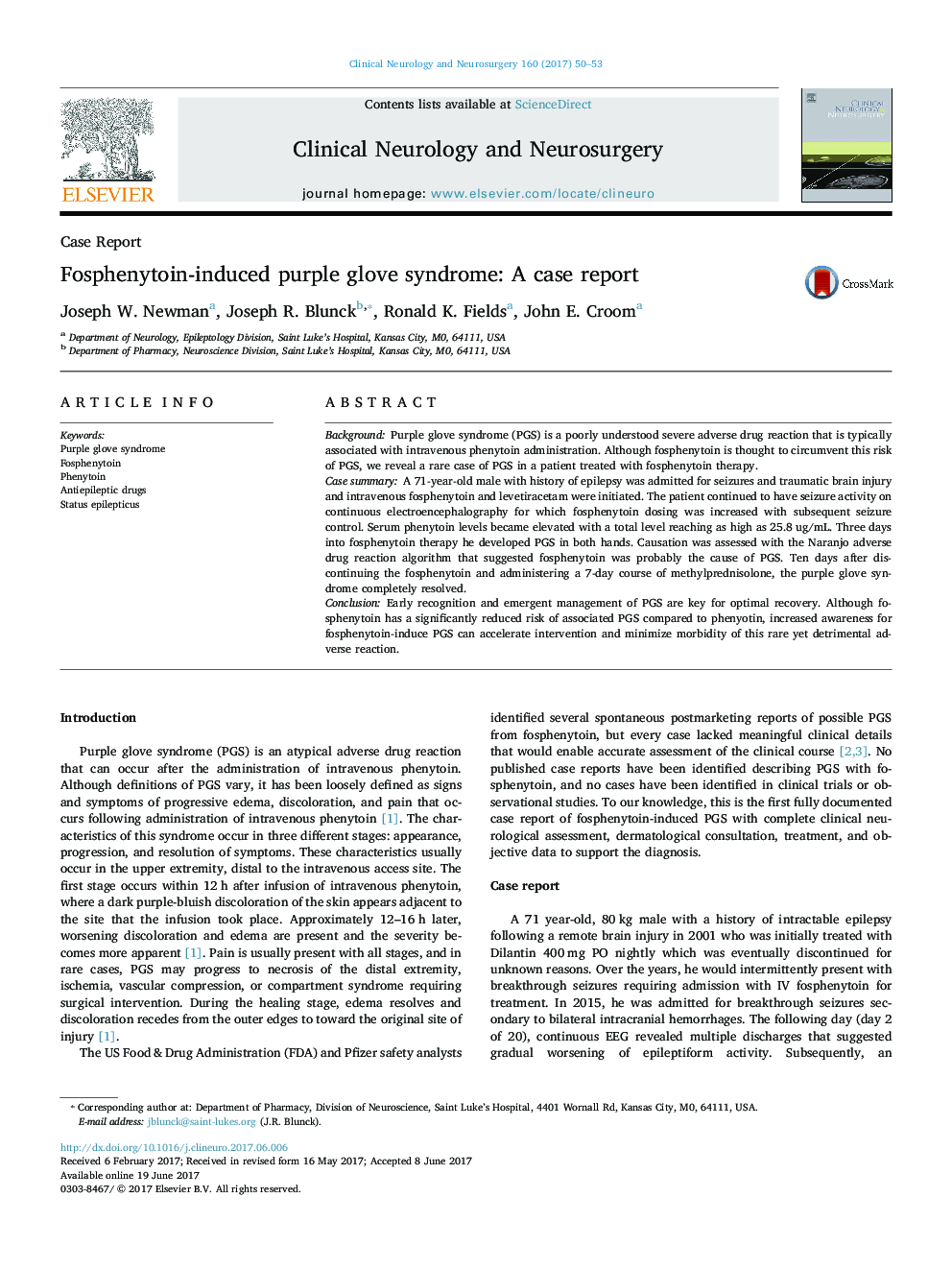| کد مقاله | کد نشریه | سال انتشار | مقاله انگلیسی | نسخه تمام متن |
|---|---|---|---|---|
| 5626961 | 1579662 | 2017 | 4 صفحه PDF | دانلود رایگان |
- Purple glove syndrome is poorly understood and typically associated with intravenous phenytoin administration.
- This is the first fully documented case report of fosphenytoin-induced purple glove syndrome.
- PGS may be linked to supratherapeutic serum phenytoin levels.
BackgroundPurple glove syndrome (PGS) is a poorly understood severe adverse drug reaction that is typically associated with intravenous phenytoin administration. Although fosphenytoin is thought to circumvent this risk of PGS, we reveal a rare case of PGS in a patient treated with fosphenytoin therapy.Case summaryA 71-year-old male with history of epilepsy was admitted for seizures and traumatic brain injury and intravenous fosphenytoin and levetiracetam were initiated. The patient continued to have seizure activity on continuous electroencephalography for which fosphenytoin dosing was increased with subsequent seizure control. Serum phenytoin levels became elevated with a total level reaching as high as 25.8Â ug/mL. Three days into fosphenytoin therapy he developed PGS in both hands. Causation was assessed with the Naranjo adverse drug reaction algorithm that suggested fosphenytoin was probably the cause of PGS. Ten days after discontinuing the fosphenytoin and administering a 7-day course of methylprednisolone, the purple glove syndrome completely resolved.ConclusionEarly recognition and emergent management of PGS are key for optimal recovery. Although fosphenytoin has a significantly reduced risk of associated PGS compared to phenyotin, increased awareness for fosphenytoin-induce PGS can accelerate intervention and minimize morbidity of this rare yet detrimental adverse reaction.
Journal: Clinical Neurology and Neurosurgery - Volume 160, September 2017, Pages 50-53
